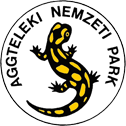
Rozsnyó Main Square
Watch Tower
The Renaissance-era watchtower in the middle of the square was built between 1643 and 1654 based on fear of the Turkish invasion. The tower was designed and erected by locals George Gerscheuer and Daniel Mossad on the remains of a former Gothic tower site. The original 38 m high tower burned down in 1766. , The tower’s upper stories and stone corridors, as well as the shingle roof were fully restored in 1997. The city’s coat of arms was added to the south façade, and now functions as a lookout tower for visitors.
The Renaissance-era watchtower in the middle of the square was built between 1643 and 1654 based on fear of the Turkish invasion. The tower was designed and erected by locals George Gerscheuer and Daniel Mossad on the remains of a former Gothic tower site. The original 38 m high tower burned down in 1766. , The tower’s upper stories and stone corridors, as well as the shingle roof were fully restored in 1997. The city’s coat of arms was added to the south façade, and now functions as a lookout tower for visitors.
Franciska Andrássy Memorial
The monument to Franciska Andrássy (1838 - 1902) was sculpted from Carrera marble in the Art Nouveau style by János Horvay and Ödön Szamovolszky. The statue was integrated at the foot of the watch tower by Richard Berndl, designer of the Andrássy Mausoleum in Krasznahorkaváralja. The monument to Count Dénes Andrássy’s wife of 36 years, the city’s benefactor, was erected in 1905 by public donations. She geneorusly supported schools, humanitarian organizations, nurseries, hospitals, founder of institutions for blind and deaf-mute people. Franciska was a daughter of the director of Vienna Conservatory. The memorial contains a statue of an oldman-beggar and two children, symbolizing the main beneficiaries of her generosity. The memorial was removed in 1973, but restored to its place of honour in 1993.
The monument to Franciska Andrássy (1838 - 1902) was sculpted from Carrera marble in the Art Nouveau style by János Horvay and Ödön Szamovolszky. The statue was integrated at the foot of the watch tower by Richard Berndl, designer of the Andrássy Mausoleum in Krasznahorkaváralja. The monument to Count Dénes Andrássy’s wife of 36 years, the city’s benefactor, was erected in 1905 by public donations. She geneorusly supported schools, humanitarian organizations, nurseries, hospitals, founder of institutions for blind and deaf-mute people. Franciska was a daughter of the director of Vienna Conservatory. The memorial contains a statue of an oldman-beggar and two children, symbolizing the main beneficiaries of her generosity. The memorial was removed in 1973, but restored to its place of honour in 1993.
The Episcopal Cathedral
The Episcopal cathedral is the most culturally historical Gothic monument in the area.
The Episcopal cathedral is the most culturally historical Gothic monument in the area.
Mining Museum
The Rozsnyó Mining Museum serves as a district museum. The main theme of the exhibition is mining and metallurgy in Gömör County. The institution presents the following permanent exhibitions: Gömör mining and metallurgy, mining as an occupation, a Slovak Karst science exhibition, historical exhibitions and a photo gallery. The museum also hosts temporary exhibitions, primarily about handicrafts.

